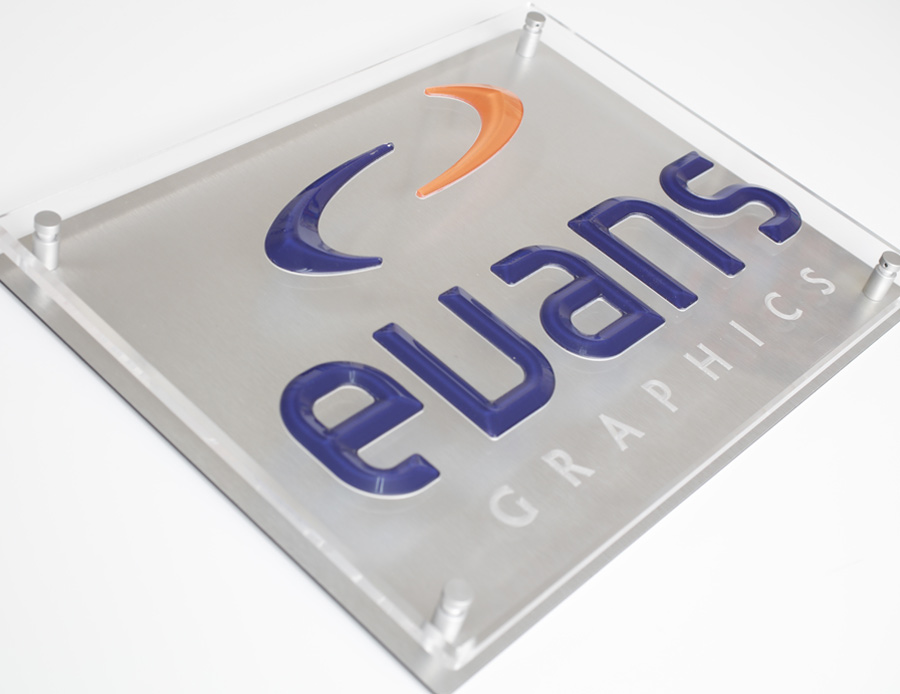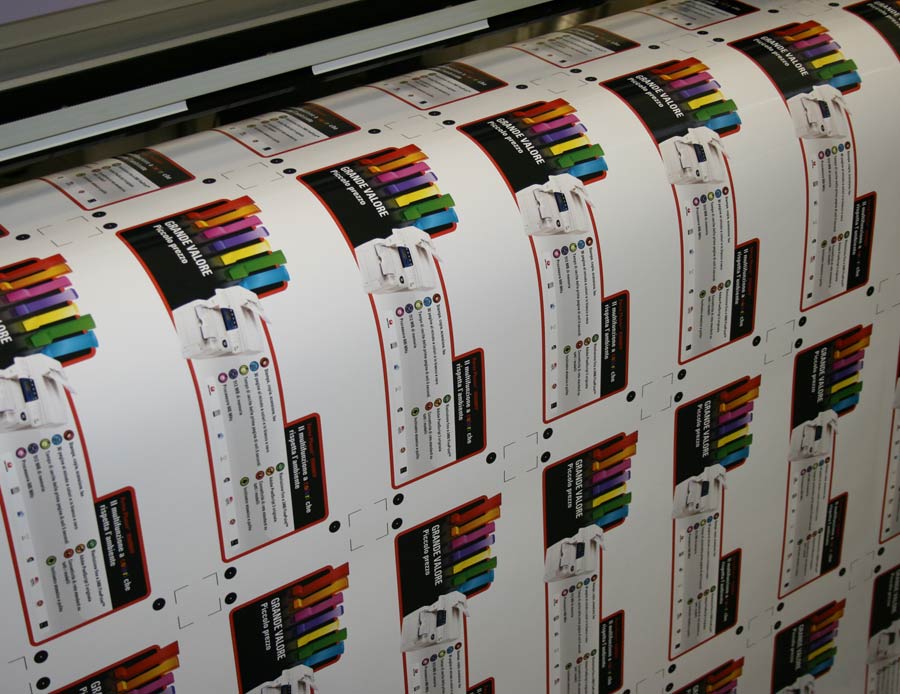Whether small or super-sized, portable or permanent, indoor or out, banners are a great way to promote your products and your company.
Evans Graphics use some of the latest print technology, materials and hardware to produce high quality banners that suit a wide range of environments and events.
And there's certainly a great many banner options to choose from, including those specific to home working! It's often best to call us so we can discuss your exact requirements and what will work best.

As the name suggests, these items can be shaped to your exact requirements, this courtesy of our large format digital printing machinery and die cutting capabilities. Customers can also embrace a wide range of materials, including cardboard, MDF and Tyvek.
With no limit on quantity, short print runs can be accommodated, helping to reduce clutter.
So too can ambitious designs, with life-size custom cardboard cutouts and complex designs encouraged for those looking to print something truly unique and memorable. Rest assured all geometric shapes can be realised and then some!
With so many different types and materials to choose from, there’s a banner for any occasion. Some of the most popular banner applications include:

Accessibility Controls
The player supports TAB to change the controls.
Update Required<br/>To play the media you will need to either update your browser to a recent version or update your <a href='https://get.adobe.com/flashplayer/' target='_blank'>Flash plugin</a>.

We are the trusted partner to your creative expression, ensuring that your design intentions shine through. Just as you imagined.

Whether it’s in the form of a free-standing display, signage or standee, these easily printed marketing assets deliver a huge impact for a low cost.

We offer both indoor and outdoor materials which can be easily wall mounted or used as free standing signage.

Our exhibition graphics are printed on high quality materials and can be finished in a variety of ways.

Magnetic printed materials can be fitted to vehicles as a means of advertising on the road.

We’ve been producing high-quality, high-impact signs for over 30 years. Everything from storefronts to POS.

Stickers are as popular as ever. Used to great effect on the high street, in classrooms and vehicles.

Full colour window graphics are a great way to brand any office or retail window, be it with company logos, designs or strap lines.
The print world was tipped on its axis in the mid 90s when digital offered a welcome alternative to traditional methods. Technological advancement has improved its output tenfold and by extension heightened its appeal. Nevertheless, there remains a good deal of uncertainty about the process itself.
To better explain large format digital Evans Graphics have compiled a definitive list of FAQs. If, after reading this post, you remain unsure on any aspect of the practice do not hesitate to contact us.

A process by which printing is controlled by computers. Electronic files are replicated using dots and colours to produce an image using either toner or ink. Unlike Litho print there is no need for printing plates and unlike screen print screens and lengthy sets ups are not required.
As recently as 1993, 600 years after the first recorded examples of print. Indigo launched their now legendary E-Print 1000, a device capable of printing directly from a computer file. This is credited with revolutionising an industry which has never looked back.
DPI stands for dots per inch and is a quality measurement for print work. 300 dpi is the accepted standard for printed materials. Dipping below 200 dpi will almost certainly result in diminished quality.
One of the real appeals of digital print is the fact it offers a quick turnaround. Unlike other forms of print there is no need for additional set up processes, an inclusion which can delay any job. Overall less time is dedicated to the pre-press set-up while the aftermath also flows faster. Indeed cutting, folding and more can be started almost immediately as the inks dry immediately.
Not really... Digital is for all intents and purposes non-contact. All designs and images are produced courtesy of ink jet nozzles, these are governed by a computer. Once instructed said nozzles spray the requisite amount of ink onto the designated area of substrate. So, while clients may be heavily involved in the design process the physical creation of their work is taken care of for them.
Digital printing is typically associated with short runs. One of the processes clear advantages is the absence of any real set-up, meaning trial runs or sampling can be overseen at little cost or effort. Indeed Evans Graphics in particular welcome the opportunity to print a single sample for review before committing to any mass order.
Depending on the project and material quantities range between 1 and 500 are ideally suited to digital, which is naturally utilised for any on-demand service. Anything more will see costs rise.
Any manner of materials. Think billboards, posters, PVC banners, hoarding displays, building wraps, interior graphics like wallpaper, vinyl’s and display boards as well as acrylics can even be realised this way.
CMYK refers to a selection of colours; they being Cyan, Magenta, Yellow and Black. Combinations of this quartet create a full colour palette. Magenta and yellow for instance will bring about red.
RGB meanwhile relates to Red, Green and Blue – the colours of light a computer screen blends in order to form colours upon it.
Nearly but not quite. Colours can be matched with precision however in instances where more specific pantones are required end users should be mindful that vibrant greens and oranges will not be exact. This pair are better realised using offset methods, which guarantee an identical match-up.
Yes. The quality of the printer will obviously influence what can and cannot be rolled out but modern machinery will allow for the likes of white and UV red invisible inks alike.
Clear varnish and gloss effects meanwhile are now commonplace, along with an emboss effect invaluable for the likes of certificates.
A bleed refers to ink that exceeds the trim edge of a page. Why? To ensure it extends the edge of the page after trimming. Clients are encouraged to build in 3mm worth of bleed on all edges given that digital printing involves a fair amount of movement.
Better than most traditional methods certainly.
Absolutely, all because of what is termed Variable Data. Being computers control the entire process it is far easier to change the content whilst an item is actually being printed. Customisation at this stage is now commonplace.
Any outlay is obviously dependent on the machinery deployed however digital is celebrated for being considerably cheaper than the likes of offset. Basic black and white outputs in particular are low cost whilst the absence of any set-up and plate expense mean your overall outlay should remain fairly modest.
Contact us today to discuss your print project with a member of our team.
Copyright © 2024 Evans Graphics Limited | Company number: 01912806
Powered by Intergage